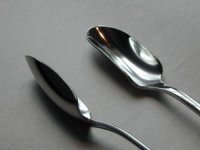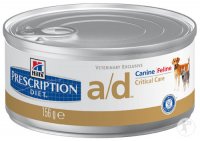CatsNbirds
Walking the driveway
- Joined
- 4/3/14
- Messages
- 165
Hi all  ,
,
Let me start off by saying, I bred various Psittaciformes (parrots) for over 10 years. So, I do have plenty of hand feeding experience. I am also licensed, in a few states in the United States, to do wildlife rehabilitation. However, I have only hand fed a few Turdus migratorius (American Robin) and some Agelaius phoeniceus (Red-winged Blackbird).
However, the breeder told me that feeding a Corvus albicollis (White-necked Raven) is NOTHING like feeding any Psittaciformes sp (parrot) chick. So, you might be wondering why would I take an approximately six week old unweaned chick? The reason is this breeder, along with the over four (4) or five (5) that I have spoken with, recommend taking this species/genus as an unweaned chick. Since, unlike Psittaciformes sp (parrots) chicks they imprint on the actual hand feeder around a certain age. So, it is recommended that the owner "finish" the actual hand feeding.
I can tell you from my experience with certain exotic mammals like an F1 Savannah cat or a Genetta genetta (Spotted Genet) that the above is MOST definitely true! Plus, not being a real "conspiracy theorist", I do not think "my breeder" or the other four (4) or five (5) breeders that I spoke with are all "bad breeders". Or whatever might be a more appropriate term in your personal view.
I am going to be attaching these Youtube clips, that ARE NOT MY OWN, to give you all a better visualization, of what I am trying to explain in a less then eloquent way. Plus, give you all visual evidence of what is expected of me.
I want to comment that this video makes hand feeding look remarkably easy. Is that an "actual way" to do hand feeding? Note that dog food is indeed part of the hand feeding "formula".
This is more like the age that I will be getting my Corvus albicollis (White-necked Raven). Do you think it will be that simple to feed him?
The large White-Necked Raven chick, the breeder claims is around 4 weeks old, could that be true ? If so, they seem like very large birds.
? If so, they seem like very large birds.
Thank you all for reading and commenting . Could the following people, who have continually helped me, please spare some more time
. Could the following people, who have continually helped me, please spare some more time  @Amy Pierce , @Birdbabe , @gibsongrrrl , @Greycloud and @waterfaller1 ?
@Amy Pierce , @Birdbabe , @gibsongrrrl , @Greycloud and @waterfaller1 ?
 ,
,Let me start off by saying, I bred various Psittaciformes (parrots) for over 10 years. So, I do have plenty of hand feeding experience. I am also licensed, in a few states in the United States, to do wildlife rehabilitation. However, I have only hand fed a few Turdus migratorius (American Robin) and some Agelaius phoeniceus (Red-winged Blackbird).
However, the breeder told me that feeding a Corvus albicollis (White-necked Raven) is NOTHING like feeding any Psittaciformes sp (parrot) chick. So, you might be wondering why would I take an approximately six week old unweaned chick? The reason is this breeder, along with the over four (4) or five (5) that I have spoken with, recommend taking this species/genus as an unweaned chick. Since, unlike Psittaciformes sp (parrots) chicks they imprint on the actual hand feeder around a certain age. So, it is recommended that the owner "finish" the actual hand feeding.
I can tell you from my experience with certain exotic mammals like an F1 Savannah cat or a Genetta genetta (Spotted Genet) that the above is MOST definitely true! Plus, not being a real "conspiracy theorist", I do not think "my breeder" or the other four (4) or five (5) breeders that I spoke with are all "bad breeders". Or whatever might be a more appropriate term in your personal view.
I am going to be attaching these Youtube clips, that ARE NOT MY OWN, to give you all a better visualization, of what I am trying to explain in a less then eloquent way. Plus, give you all visual evidence of what is expected of me.
I want to comment that this video makes hand feeding look remarkably easy. Is that an "actual way" to do hand feeding? Note that dog food is indeed part of the hand feeding "formula".
This is more like the age that I will be getting my Corvus albicollis (White-necked Raven). Do you think it will be that simple to feed him?
The large White-Necked Raven chick, the breeder claims is around 4 weeks old, could that be true
 ? If so, they seem like very large birds.
? If so, they seem like very large birds. Thank you all for reading and commenting
 . Could the following people, who have continually helped me, please spare some more time
. Could the following people, who have continually helped me, please spare some more time  @Amy Pierce , @Birdbabe , @gibsongrrrl , @Greycloud and @waterfaller1 ?
@Amy Pierce , @Birdbabe , @gibsongrrrl , @Greycloud and @waterfaller1 ?
 although, we don't use our hands, we use raven puppets with hemostats, but then we don't want "imprinted" babies....you do,,,so if you " hand feed" as shown in the video, make sure your hands are beyond clean,,! And yes, baby ravens are big, noisy and cute as h#((. Remember, high protein and calcium.
although, we don't use our hands, we use raven puppets with hemostats, but then we don't want "imprinted" babies....you do,,,so if you " hand feed" as shown in the video, make sure your hands are beyond clean,,! And yes, baby ravens are big, noisy and cute as h#((. Remember, high protein and calcium.  .
. . Maybe, you can rephrase this for stupid me
. Maybe, you can rephrase this for stupid me  ?
? .
.
 . I wonder if my specimen will do that? It would be cute to see such a large Corvid do that.
. I wonder if my specimen will do that? It would be cute to see such a large Corvid do that.

 .
.
 ! That makes me A) very happy and B) less scared.
! That makes me A) very happy and B) less scared. .
. ?
?
 I haven't had any babies to raise in a while! But here's a pic of one very similar to mine that I saw on the internet! Mine was just slightly more 'bent' and wasn't done quite as neatly as this
I haven't had any babies to raise in a while! But here's a pic of one very similar to mine that I saw on the internet! Mine was just slightly more 'bent' and wasn't done quite as neatly as this 

 !
! .
.


